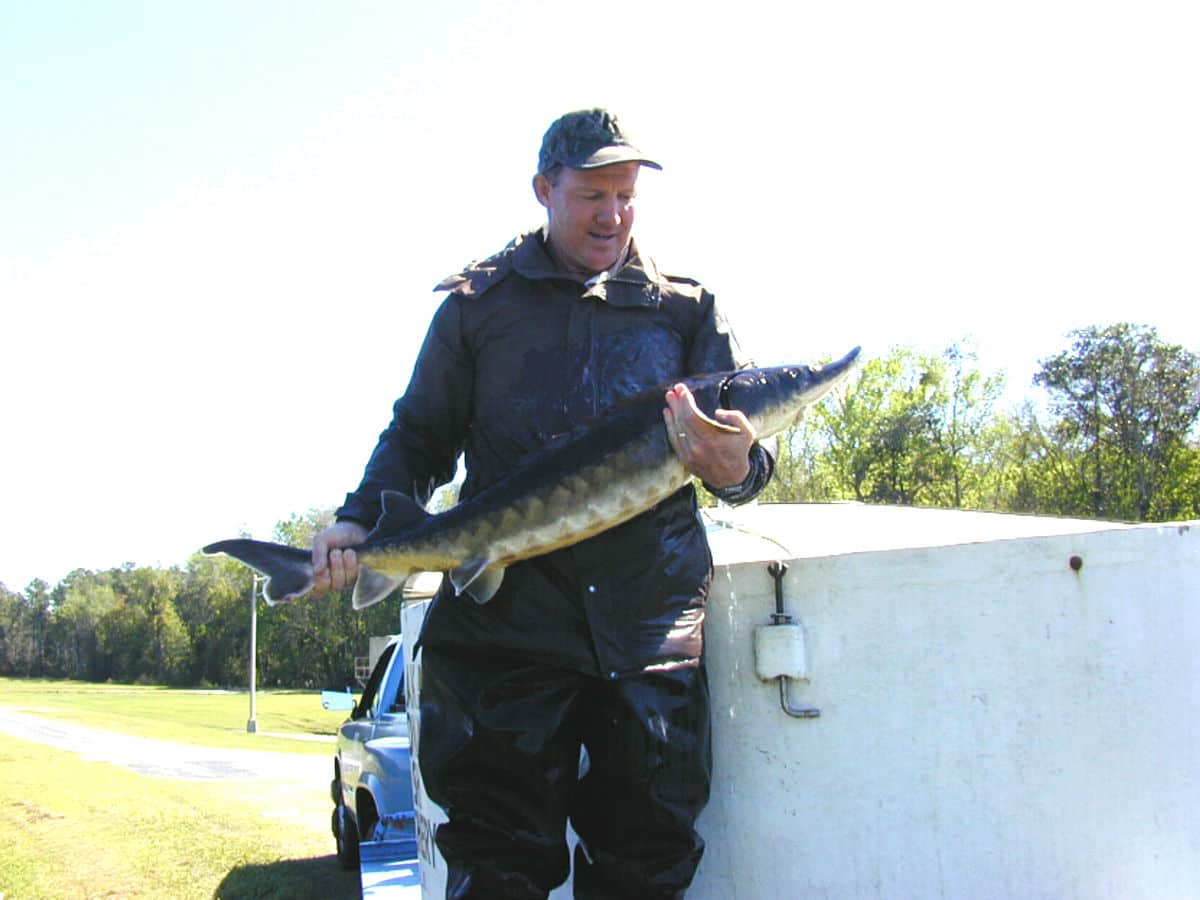Research Showing Hurricane Michael Killed Half of Gulf Sturgeon
Eugene L. 12.09.22

Anoxic Water largely to blame
Even after 4 years the evidence of Hurrican Michael is still evident around the eastern Panhandle of Florida and beyond. In Octobe of 2018 the Category 5 hurricane made landfall near the Apalachicola River with 160+mph winds and a storm surge of up to 14ft. While the damage on land was out in the open and easy for everyone to see, there was plenty of destruction underwater as well. A study by researchers at the University of Georgia with the U.S. Fish and Wildlife Service has recently shown what extent the damage was to the river in the aftermath of Hurricane Michael. These results were published in the December issue of Transactions of the American Fisheries Society, showing the full extent of damage to the gulf sturgeon population.
Scientists with the UGA Warnell School of Forestry and Natural resources were able to make a timeline of what happened in the river during and after the hurricane came through. Using data from a long-term and ongoing project in the Apalachicola River that monitors gulf sturgeon (Acipenser oxyrhynchus desotoi), the scientists saw the oxygen levels, flow rate, and the fate of the gulf sturgeon that either went up river or out into the Gulf of Mexico to escape.
“We had a couple different metrics for ‘before’ adult population estimates, and there’s also monitoring for other [sturgeon] in all the rivers nearby, so we would know if they went into other rivers,” said Adam Fox, an assistant research scientist at Warnell and co-author of the study. “So, all of that gave us information that we saw a decline of 36% to 60% of the adult fish compared to pre-storm estimates.”
The Gulf Sturgeon are a federally listed protected species which once spanned in range from Tampa Bay to New Orleans. But now their population has shrunk down and only lives in seven rivers now. The largest of these populations live in the Suwanee and Apalachicola Rivers. The Apalachicola river usually has an oxygen content of 4 to 6 milligrams per liter of water. But once Hurricane Michael came through and brought all the debris and sewage into the river, the oxygen levels dropped to near zero and stayed that way for almost a month. Causing anoxic water conditions and fish kills.
There is a population estimate of around 1,000 adult fish in the river, and due to the water condition post-hurricane, the scientists estimate a loss of between 30% to 60% of the adult population.
“This is obviously very concerning, especially because with climate change, hurricanes are supposed to increase with frequency and intensity,” said Fox, noting that hurricanes historically have hit the western portions of the panhandle—areas where gulf sturgeon have struggled for generations.
But then Fox and the study’s lead author, 2021 Master of Science graduate Brendan Dula, realized another aspect of the sturgeon population still hadn’t been accounted for.
“Because if the adults were dying, we thought we were probably going to lose an entire juvenile year class,” he added. After hatching further upstream, juvenile sturgeon spend the first couple years of their life in estuaries—not quite the gulf, but not quite the river.
By the time Hurricane Michael made landfall near Mexico Beach, the team of scientist had only five juvenile surgeons tagged. All of those juveniles disappeared after Michael came through. But the next year there was an amazing surprise.
“We actually had more ‘age 1’ fish than we’d had in the years before the storm. And so somewhere upriver they found some sort of refuge. Probably, we think, below Jim Woodruff Lock and Dam where water may have been better oxygenated,” said Fox. “Gulf sturgeon spawn in the spring, but there’s growing evidence that sometimes they also spawn in the fall. Spawning is also related to flow, and so high flow from the river may have made for a successful fall spawn.”
Gulf Sturgeon lay up to 400,000 eggs each year per fish, but only about 50 of those eggs will survive to the age of 1 in the Apalachicola River. But in years since the hurricane that number has double to over 100 juveniles a year.
“They’re very sensitive to a lot of things and have a slow maturation—between 8 and 15 years. So, if adults are harvested or killed by hurricanes, that has huge impacts down the road,” said Fox. “But as long as there’s some sort of refuge for them, the next generation may survive. It may take a while before they can spawn on their own, but at least they’re around.”

